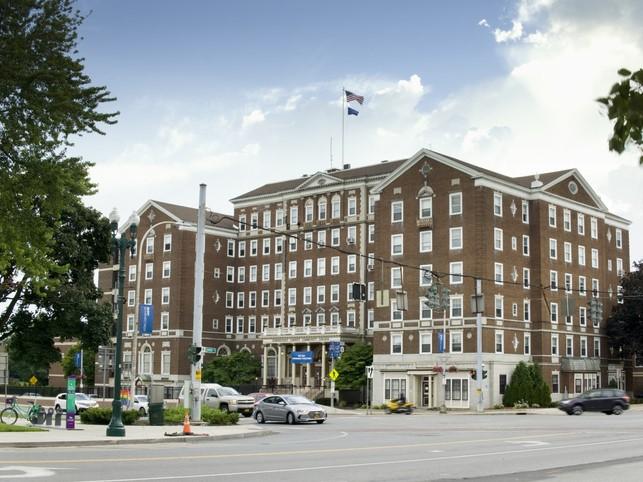Across the United States, community college enrolments have been significantly depressed by the pandemic’s impact on prospective students. In fact, community college enrolment in spring 2021 fell 9.5 percent year on year. That’s a loss of about 476,000 students, contributing to the largest total enrolment decline in higher education in more than a decade.
But while such figures may be daunting, there are fresh signs of student interest in the community college experience − and of the positive impact that two-year institutions have to offer as the country begins its recovery.
An estimated 20.5 million adults aged 25 to 64 plan to enrol in community or technical college in the next two years, according to a recent report from Strada Education Network. And for good reason. With their close connections to local and regional industries and their ability to quickly respond to training needs, community colleges will have a large role to play in addressing the workforce needs created by the pandemic.
What may surprise some, however, is just how cutting-edge their approach to education and training can be. Admittedly, one of us works at a community college, but we feel it’s no exaggeration to say they are at the front line of workforce innovation.
- How AI and chatbots can deliver personalised career planning
- Displaced workers deserve more than short-termism from universities
- Why and how to teach the skills wanted by employers in 2021 and beyond
Today’s community colleges are turning to an array of emerging technologies to ensure they continue to meet the needs of a rapidly evolving workforce. And there is growing recognition of − and support for − such innovation. The League for Innovation in the Community College, for example, cultivates and fosters impactful, cutting-edge practices around advancing the community college role in public health, addressing national workforce needs and supporting pathways programmes.
Earlier this year, the National Science Foundation, in partnership with the American Association of Community Colleges, announced the Community College Innovation Challenge, directly involving community college students in the race to innovate. Teams of students work with a lecturer or mentor to create solutions to real-world problems while participating in a virtual bootcamp designed to build their strategic communication and entrepreneurial skills.
Last year, the non-profit Education Design Lab launched its Community College Growth Engine Fund, selecting six community colleges to receive a start-up award of $100,000, as well as support from the lab to launch what it calls “micro pathways”. The goal is to rapidly connect low-wage and entry-level workers to in-demand jobs that pay at or above the median wage, further cementing two-year institutions’ role in connecting students to rewarding careers.
Advances in technologies such as virtual and augmented reality are now finding a home on community college campuses, helping students safely and conveniently gain critical hands-on experience. These immersive learning tools are proving especially impactful at a time when the pandemic has forced so many students to learn and work remotely.
This has been the case at Wallace State Community College in Alabama. Launched in 2020, following a meeting at which the Alabama Trucking Association discussed their dire workforce needs, Wallace State’s Diesel by Distance programme combines self-paced coursework, online training and work-based learning partnerships for students looking to earn a certificate or degree in diesel technology. In April, the college added a virtual reality component to the popular programme, recreating the working environment of a diesel technician or mechanic. Through TRANSFR’s immersive simulations, students can now learn, practise and master skills crucial to the construction, manufacture, repair and maintenance of diesel engine vehicles.
The programme offers flexibility for working adults who are balancing complex and varied demands on their time. Because the programme allows learners to study from anywhere, students can participate in paid apprenticeships across the country.
These programmes and initiatives are just the tip of the iceberg, and as the pandemic displaces workers and dramatically increases the demand for upskilling and reskilling efforts, community colleges have a lot to teach the US about the programmes, technologies and innovations that can lead to stronger career outcomes for today’s learners.
In an ironic twist, as bachelor’s degree-granting institutions become increasingly focused on employability, there’s much they can learn from the creative workforce strategies developed at community colleges. After all, universities, too, will have a large role to play in getting people back to work. This is an area in which they have long struggled, and there is much they can learn from how two-year institutions are building stronger bridges between classrooms and careers.
Community colleges have always quietly worked to tackle the most pernicious of our nation’s workforce challenges. Every so often, those challenges become so great that the rest of the country takes notice. For decades, presidents from both parties have praised community colleges. The Bush administration touted access to community colleges by expanding Pell and boosting dual enrolment funding. In the years following the financial crash, the Obama administration invested billions of dollars into community colleges to boost the then ailing economy. The Trump administration’s support of apprenticeships has been key to the growth of work-based learning. Now, the Biden administration is exploring similar steps in the aftermath of the pandemic’s economic impact.
As ever, our innovative community colleges are prepared to step into the spotlight as history demands.
Vicki Karolewics is president of Wallace State Community College, Alabama, US.
Bharani Rajakumar is CEO of TRANSFR.




comment